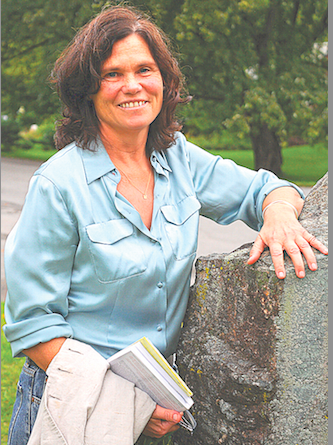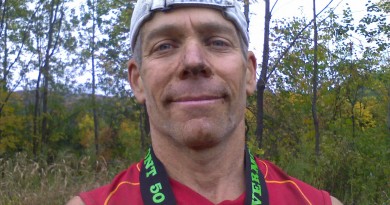High-Altitude Woman – Stowe’s Jan Reynolds Shares Her Experience in Male-Dominated Mountaineering
Whether it was growing up on a farm—the sixth of seven children, competing as an Olympic biathlete, or completing faraway mountaineering expeditions, Jan Reynolds knows what it’s like to work hard to prove herself.
The Salisbury native doesn’t shy away from physical challenges, undeterred that she often finds herself the only female in her group.
Using research in gender psychology and her own anecdotes from expeditions around the world, the prize-winning photojournalist and world-renowned athlete shares her insights into the psychologies of men and women in her latest book, [itals] High-Altitude Woman: From Extreme Sports to Indigenous Cultures—Discovering the Power of the Feminine.
In the ’70s and ’80s, Reynolds was trekking and guiding in the Himalayas, the southern Alps, the Sahara Desert, the Canadian Arctic, and the Amazon Basin—many times as the only woman on the team or on her own. In those years of traveling, training, competing, and mountaineering, Reynolds, now 58, observed differences in communication and styles of leadership between members of her parties, particularly along gender lines. In her new book, she tries to make sense of those trying situations.
“Sometimes people bump into the differences in the way men and women think, speak and behave, and it’s problematic,” Reynolds says of the many circumstances in which communications were key to surviving critical situations. “But if you understand the differences, you get along easier,” and you make better decisions, she said in an interview recently.
“On all the expeditions I was on, I was almost always the only female, and the role I instinctively played was to monitor and build consensus among some strong personalities.”
Many of the anecdotes Reynolds, now of Stowe, recounts in [itals] High-Altitude Woman also illustrate research in gender studies, psychology, and gender empowerment, citing the work of Janet Shibley Hyde, Michael Gurian, Deborah Tannen, and others.
In her research, Reynolds identifies men as typically more willing to assert themselves in groups and more confident in their skills and abilities. In contrast to males, Reynolds finds women develop confidence differently and assert themselves in groups through encouragement rather than conflict.
Whether hot-air ballooning over Mount Everest (a journey involving a crash landing and near gas fire in their balloon) or trekking through the New Zealand Alps, Reynolds says these differing styles of communication created group dynamics that were either helpful to the group or a hindrance.
“Men use conversation to create hierarchy and women use conversation to bond,” she says. “That was part of my role on the expedition as a female. When the other guys were out, they would start talking to me about stuff that they wouldn’t talk to the other guys about.”
While co-leading groups with a longtime climbing companion Ned Gillette (who was killed in Pakistan in 1998) in the Himalayas, Reynolds found herself using less assertive and more empathetic behaviors to build consensus and keep the group moving. As a result, a number of her male peers, including world-class climber Jim Bridwell, recognized her behavior as a vital contribution to the group.
“It was always the older guys that seemed to give me more positive feedback than the younger guys in every expedition,” she says. “It took me a while looking back on expeditions to figure that out.”
Reynolds, who is the author and photographer of several other books, including the Vanishing Cultures series of children’s books, expects to receive “some flak” about the content and approach of her most recent effort.
“I am talking about gender stereotypes in groups, and a lot of people are going to jump on me for this,” she says. However, she says the message behind the book is intended to be one of empowerment.
“This is supposed to be a fun book,” she says. “But what’s on my mind, what I’d like to do with some talks and workshops, is to be that voice in every little girl’s and woman’s ear, saying, ‘You can do this; you got this.’”


